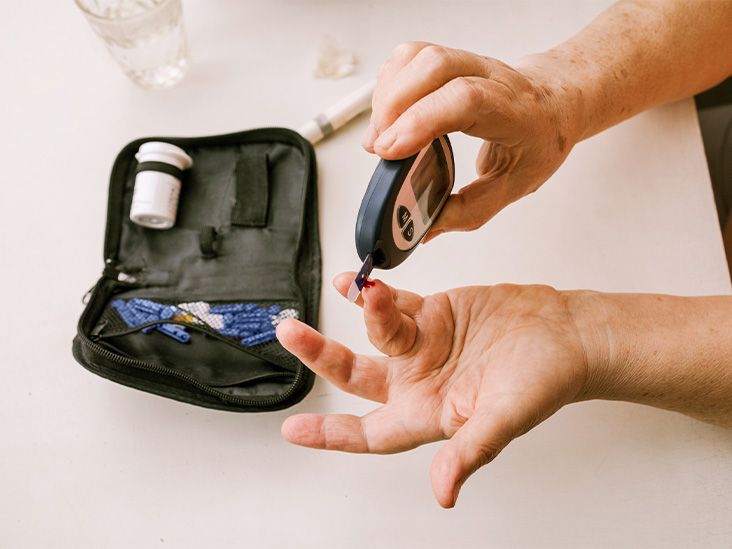Addison’s disease occurs when the adrenal glands do not produce enough hormones. It can lead to a range of symptoms, such as freckles and darkened patches on the skin, including on the face.
The symptoms of Addison’s disease may vary depending on the underlying cause. Addison’s disease is often due to an autoimmune condition, meaning that the immune system mistakenly attacks healthy tissue in the adrenal glands. These glands sit on top of the kidneys and release important hormones related to the body’s stress response and salt balance.
This article explains the visible effects of Addison’s disease on the face, the other symptoms, and the treatment options for Addison’s disease.

Addison’s disease can have visible effects on the skin, including the skin of the face. It can cause vitiligo, black freckles, and darker patches of skin.
Darker patches of skin
Darker patches of skin are among the first signs of Addison’s disease that develop in many people.
Patches of the skin may develop hyperpigmentation, which means they become darker than the surrounding skin. This commonly occurs near scars and around skin creases, such as on the knuckles. However, it can also affect mucous membranes, including the gums and lips.
The authors of a 2021 case report note that these symptoms may be less clear in people with Addison’s disease who have darker skin tones.
Some people with Addison’s disease may develop black freckles on their forehead, face, and shoulders.
Vitiligo
Vitiligo causes patches of skin to lose pigment, becoming lighter or appearing white. These patches may vary in appearance, depending on where on the body they develop. Some people may develop several large patches of lightened skin, while others may have only small spots.
People with vitiligo most often show symptoms on the face, scalp, mouth, and neck. The relationship between Addison’s disease and vitiligo can also work the other way: People with vitiligo may have
The cause of Addison’s disease face effects is linked to the relationship of the adrenal glands, the pituitary gland, and the hypothalamus. Together, these form the HPA axis.
The hypothalamus releases a compound called proopiomelanocortin, which converts into adrenocorticotropic hormone (ACTH) and melanocyte-stimulating hormone (MSH). ACTH triggers the release of hormones from the adrenal glands. MSH stimulates melanocytes in the skin to produce pigment, darkening the skin.
If the adrenal glands do not produce enough hormones, the HPA axis makes more proopiomelanocortin. This can lead to increased melanin in the skin, forming the darkened or discolored patches that can accompany Addison’s disease.
In its early stages, Addison’s disease can be difficult to diagnose. Many of the early symptoms resemble those of other conditions.
The most common symptom of Addison’s disease is fatigue, and this is often one of the first symptoms to develop.
Some symptoms of the condition develop early on, while others can take months or years to affect a person.
Early symptoms
Along with fatigue, a person might experience the following early symptoms of Addison’s disease:
- sleepiness
- weakness
- mood changes
- irritability
- unexpected weight loss
- reduced appetite
- more frequent urination
- increased thirst
- a strong urge to eat salty foods
- dehydration, possibly due to low levels of the hormone aldosterone, which controls salt and water balance
Late symptoms
Some symptoms may occur after a much longer period of living with Addison’s disease. They can also develop if stress makes the condition worse during a shorter time frame.
These include:
- orthostatic hypotension (low blood pressure on standing up), which may cause dizziness and fainting
- nausea
- vomiting
- diarrhea
- pain in the abdomen, joints, or back
- muscle cramps
- chronic exhaustion
- depression
- low libido, which is more common in females
- missed or irregular periods
- delayed puberty in children with Addison’s disease
- low blood sugar, which can cause concentration issues, anxiety, confusion, and possible loss of consciousness
People with Addison’s disease
Corticosteroids can replace cortisol. People usually take two or three doses of hydrocortisone per day. Rarely, doctors will prescribe dexamethasone or prednisone.
A medication called fludrocortisone may help replace aldosterone and restore fluid and salt balance. However, not every person with Addison’s disease has low aldosterone.
A healthcare professional may need to adjust the dose in response to unrelated surgeries, illnesses, or injuries. During pregnancy, a person can typically take the same dose. However, if nausea makes it difficult for a person to keep taking oral medication, a healthcare professional may prescribe injections instead.
Treating adrenal crisis
Adrenal crisis, or Addisonian crisis, is a medical emergency in which levels of adrenal hormones become dangerously low and Addison’s disease symptoms severely and suddenly worsen.
A person experiencing an adrenal crisis will generally receive an urgent injection of corticosteroids. Additionally, they will typically get an intravenous (IV) infusion of saline solution that also contains a sugar called dextrose.
The following are some questions people frequently ask about Addison’s disease.
How can you tell if someone has Addison’s disease?
Addison’s disease can be difficult to identify at first. Skin symptoms, including hyperpigmentation, vitiligo, and black freckles, may suggest that a person has Addison’s disease. A person may also report feeling tired, weak, and thirsty or show signs of low mood and irritability.
What does your skin look like with Addison’s disease?
Many people with Addison’s disease may appear to have darkening of the skin, especially around scars, skin folds, and mucous membranes.
People with Addison’s disease may also have white patches on the skin due to vitiligo or black freckles on the face, scalp, and shoulders.
Addison’s disease has links to several skin symptoms that can show on the face. These include darker patches of skin, black freckles, and white patches known as vitiligo. Skin changes may occur due to the relationship between the HPA axis and the skin’s melanocytes, which affect pigment.
Other symptoms include nausea, vomiting, mood changes, and gastrointestinal symptoms such as diarrhea and belly pain. Treatment for Addison’s disease is lifelong and involves using corticosteroids to replace the adrenal hormones.


